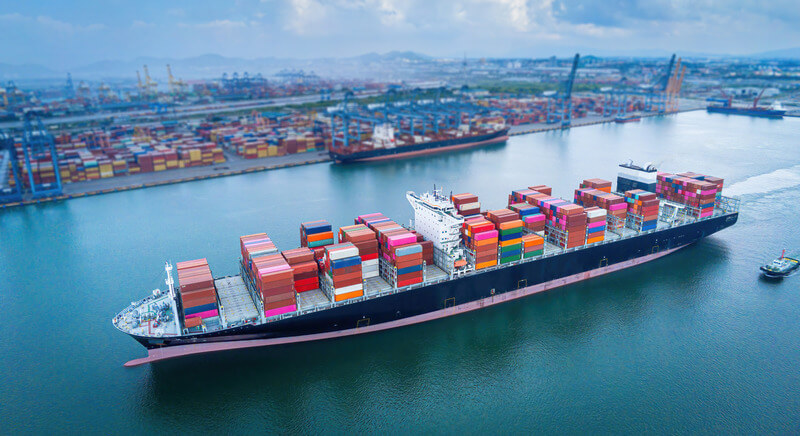Longshore Act 905(b) Vessel Negligence Claims

Have you been injured in a maritime work accident but aren’t sure what compensation is available? Maritime law contains several provisions related to longshoreman workers’ compensation after an injury, depending on the type of worker and location of the accident.
One legal provision that helps maritime workers is The Longshore and Harbor Workers Compensation Act (LHWCA), including extended employee legal action under section 905(b). Understanding 905(b) claims can help you obtain a maximum worker injury lawsuit settlement.
Keep reading to find out who qualifies for compensation under the Longshore Act. If you would like an attorney to help you sort through the specifics of maritime law injury compensation, contact Johns Law Group for a free consultation.
Who Does the Longshore Act Cover?
The Longshore Act provides compensation for injured maritime workers, including longshoremen, shipbuilders, and harbor workers. The Act covers injuries that occur offshore or on adjacent areas such as docks, piers, wharves, and shipyards.
The Longshore Act was enacted in 1927 to provide coverage for maritime workers excluded by the Jones Act.
This means that workers eligible for Jones Act protection cannot file a claim under the Longshore Act. Likewise, maritime workers who have workers’ compensation coverage cannot file a claim under the Longshore Act.
What Compensation Does the Longshore Act Provide?
The Longshore Act provides maritime workers a no-fault avenue for recovering compensation. This means that even if the accident was the worker’s fault, the worker can still recover under the Longshore Act.
The employer must pay for the worker’s medical treatment, rehabilitation expenses, and two-thirds of the employee’s weekly wage.
This compensation continues as long as the worker is disabled. Wrongful death benefits allow the surviving spouse half of the worker’s average wage, with 16% added for the worker’s children.
Our Featured Case Results
What Is a 905(b) Claim?
While helpful in providing basic compensation, the Longshore Act does not allow an employee to sue an employer for damages.
However, there is an exception to the Longshore Act’s general rules, in section 905(b), that allows an employee to sue a third party or a negligent employer.
A 905(b) lawsuit for employer negligence is fault-based, requiring an employee to prove the four elements of negligence:
An employee could sue a third party, such as an equipment manufacturer, if faulty equipment caused the accident.
Damages under section 905(b) include a broad range of harm suffered by the employee, such as the following:
An employee can recover for more extensive damages under 905(b), so employees should explore filing a lawsuit under this provision to obtain maximum compensation for their injury.
Types of 905(b) Claims
In 1981, the United States Supreme Court outlined three distinct types of 905(b) duties that a shipowner owes to longshore or harbor workers.
These duties establish when and how a shipowner is responsible for ensuring a safe working environment. Employees can file longshore claims if the shipowner breaches these duties.
Turnover Duty
Turnover duty concerns the vessel’s condition when the shipowner transfers control to the stevedore (the party responsible for loading and unloading the ship).
The shipowner must exercise reasonable care to ensure that the vessel is in a reasonably safe condition for the stevedore’s employees during turnover. The shipowner has a duty to warn of any latent or hidden dangers on the vessel that are known or should be known.
Active Control Duty
There are some situations where the shipowner participates in the loading and unloading operations.
If the shipowner assumes an active role or takes control of the work, they must exercise reasonable care in preventing hazards and ensuring the safety of the workers. Because of the shipowner’s involvement, they may be liable for any injuries occurring during this time.
Duty to Intervene
A shipowner must intervene when they know or should know of an unsafe condition. In these cases, the condition usually poses a significant risk to workers and is not part of the ordinary hazards associated with the work. This duty doesn’t require the shipowner’s direct involvement in the stevedoring operations.
How Long Do I Have to File a 905(b) Claim?
Although the Longshore Act does establish a deadline to file a claim, most courts hold that there is a three-year statute of limitations for 905(b) claims.
This is the general statute of limitations for maritime cases. A court can dismiss a claim if you file it more than three years after sustaining an injury.
However, some Longshore Act claims also fall under state personal injury law. For example, Texas has a two-year statute of limitations for these claims.
Defense attorneys might argue that you need to file a claim under this state law instead of the Longshore Act. If a court agrees, it may bar a claim even if you file it within the standard three-year period for maritime claims.
If you’ve been injured, work with an attorney as soon as possible so that they can file your claim within the appropriate deadlines. Waiting too long can make you ineligible for longshore and harbor workers’ compensation.
Do You Want to Talk to a Maritime Attorney?
If you think you have a Longshore Act section 905(b) claim, you should talk to a knowledgeable maritime attorney. Maritime law is complex, and lawyers who handle land-based workers’ compensation claims may not understand the intricacies of the law governing maritime injuries.
Johns Law Group helps maritime workers who have been injured on the job. Our attorneys have maritime law degrees, and we have offices throughout the Gulf South. We understand both the maritime work environment and the tactics insurance companies use to deny your claim.
Contact us for a free consultation where we can review your accident experience and let you know if we can help you with a section 905(b) claim. Then, we’ll advocate for you with the insurance company to try to obtain a maximum workplace injury settlement.